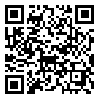BibTeX | RIS | EndNote | Medlars | ProCite | Reference Manager | RefWorks
Send citation to:
URL: http://rjms.iums.ac.ir/article-1-354-en.html
Digits in excess of five in the human are anomalous and polydactyly is the term to denote duplication of digite. Polydactyly is the second most common congenital deformity of the hand, only after syndactyly. In the blacks, the incidence is about 1 in 300, and in the whites it is 1 in 3000.
The presence of an extra diggit can be inherited as an autosomal dominant trait. Numerous homebox genes are known to be expressed in various cell groups of the developing limb, uiding the developmental processes. It is likely that mutations involving Hox genes, growth factors, and morphogen receptors give rise to abnormalities of limb development. Regarding to researches in Shahid Akbarabadi Maternity hospital from 1993 to 1999, polydactyly incidence per 1000 is 0.83.





